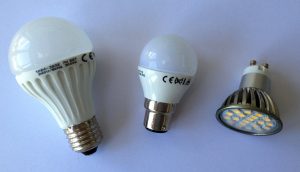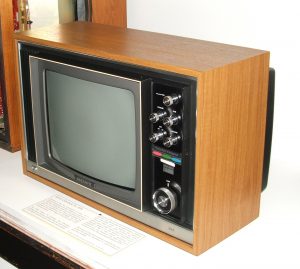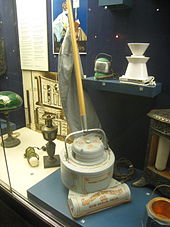
I have always been interested in design, and as a child I was fascinated by the old washing machines, cookers and lamps in London’s Science Museum. As a teenager I wanted to be an architect, but decided to do engineering, which spanned my interests in design and science. This led me to study mechanical engineering and then take a master’s degree and PhD in design technology at Manchester University under John Christopher Jones, one of the originators of systematic design methods and a broad systems approach to design.
This interest led me to write a book Consumer Product Innovation and Sustainable Design (Routledge, 2016). The core of the book comprises case studies of six consumer product classes – bicycles, washing machines, vacuum cleaners, electric lamps, television equipment and mobile (cell) phones. The case studies draw upon the British consumer magazine Which? going back to 1957, plus many other print, online and museum sources, to track the technological innovation and design evolution of these products from their initial inventions in the 19th and 20th Centuries to the present day.
One of the aims of the book was to use the evidence of the case studies to provide practical guidelines and lessons for product designers, engineers, managers and marketers, and for educators of these professions. Below is the first of three articles which summarise some of these guidelines and lessons that are detailed in the final chapter of the book. The other articles Avoiding failure and Designing for Sustainability will appear in future blog entries.
Designing for Success
While many innovations and new products fail, others have become highly successful in terms of widespread adoption and/or profitability. What do the case studies suggest distinguishes these successful innovations and new products from the less successful ones?
Genuine innovation

For a ‘first to the world’ product innovation to succeed it must offer functions or other benefits that previously did not exist and that consumers need or want. For example, light emitting diode (LED) lamps offer higher energy efficiency, cooler operation and lower running costs than compact fluorescent (CFL) and halogen incandescent lamps and so are gradually displacing these earlier technologies. Another example is the iPhone, first introduced in 2007, which offered many advantages over earlier smartphones, including touchscreen icons and keyboard, much greater ease of use, an increasing number of ‘apps’ and a highly desirable, elegant design. Other manufacturers were soon forced to develop their own touchscreen smartphones based on the concepts pioneered by the iPhone.
Relative advantage

Very few new products are ‘first to the world’ innovations, like the iPhone, but are based on established technologies and designs and so must compete with rival products from other suppliers. To succeed such new products must offer what consumers consider to be a genuine set of advantages over competing products, services or systems – what Everett Rogers calls ‘relative advantage’. For example, Sony’s Trinitron colour TV tube, in which the picture was formed from lines rather than dots, offered better picture quality than other colour cathode ray tubes plus the higher reliability of Japanese TVs. Picture quality and reliability are highly valued by consumers, so Sony TVs became very successful in the 1970s. Conversely, the Philips LaserDisc, a high definition rival to video cassette recorders (VCRs) launched in the 1980s, failed the test of relative advantage.The player and its large silver discs were more expensive than VCRs and videotapes, could not be recorded on, and could only hold a shorter recording. For consumers, these disadvantages outweighed the LaserDisc’s higher definition pictures and it soon disappeared.
Affordable price

When first introduced most innovations command premium prices and so are mainly adopted by wealthy consumers and enthusiasts. Then, with improved scale and efficiency of production, and in order to expand the market, manufacturers normally reduce prices. If the unique functions or advantages relative to the competition are considered by consumers to represent ‘value for money’, many more then begin to adopt or purchase the product. Vacuum cleaners, for example, were originally aimed at addressing the ‘servant problem’ in wealthy households and only became more widely affordable in the 1950s. When first introduced in Britain in 1967 a colour TV set cost about £300 (about £4750 today) so most people rented. Six years later the price had almost halved, sets had become more reliable so it became more worthwhile to buy. Today you can pay from £150 to nearly £3000 for a high definition TV, depending on screen size and resolution. Thus good quality TV sets have become generally affordable, with upmarket models available at premium prices for those who can afford or want them.
Good design

In the early phase of innovation, products are often designed as assemblies of functional components with relatively little attention paid to their ease of use, form, colour, surface finish and user interfaces. As the products evolve, increasing effort is normally devoted to their industrial and ergonomic design in order to make the products more useable, visually and tactilely appealing and fashionable. Electric washing machines are an example of a product that started as an assembly of functional parts – wooden tub, external motor, drive chains, wringer, etc. As the machines evolved the parts became integrated; first with the mechanical components enclosed, then with the cabinet design changing from round tubs on legs, like earlier machines, to box shapes. With the introduction of the automatic washing machine the drier was integrated into the cabinet instead of being provided by a separate wringer or spin drier. With further evolution controls became more sophisticated and so attention was paid to user interface design. The latest machines are increasingly sleek in form with large flush glass portholes and electronic displays to echo contemporary kitchen aesthetics.
For more on the book see:
https://www.routledge.com/Consumer-Product-Innovation-and-Sustainable-Design-The-Evolution-and-Impacts/Roy/p/book/9780415869980

Leave a Reply